31 Types of Cheese To Add to Your Next Charcuterie Board
Cheese and thank you—our grocery list is officially inspired.
There was talk in late 2022 that butter boards were the new cheese plates. It was heresy. Cheese plates and charcuterie boards filled with an assortment of different types of cheese remain party staples. And, not to be cheesy, it's more because of the cheese than the prosciutto.
A member of the dairy food group but so much cooler than milk, cheese is incredibly versatile. You can slice it, dice it or melt it. Cheese spruces up a salad, makes a sandwich special and pairs perfectly with vinos. It can be an appetizer, side or even dessert. Truly, cheese can even be its own meal—it's just that delicious.
Common types of cheese include American, cheddar and Swiss. But there are so many more to sample, each worth a try.
Related: 14 Popular Types of Beans
31 Delicious Types of Cheese
American Cheese
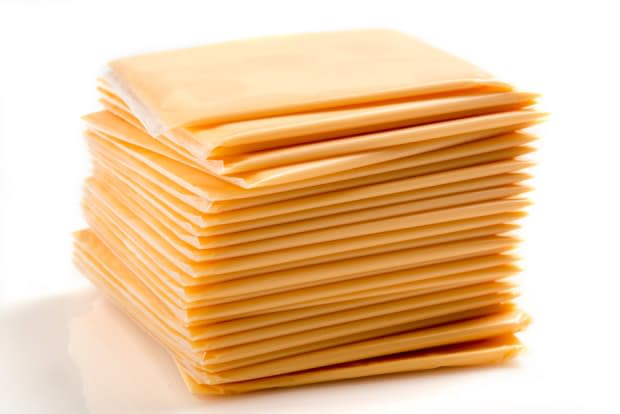
iStock
This thin-sliced cheese was a staple in school lunches in the 1990s (including Lunchables, a kids' version of charcuterie boards — tell me I'm wrong). There have been takes over the years that American cheese is "gross" that are saltier than American cheese itself. But the cheese remains a go-to pick for no-fuss cheeseburgers or a healthy dose of nostalgia.
Asiago Cheese
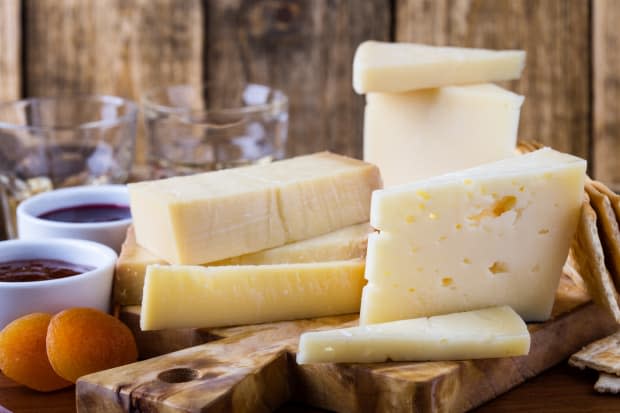
iStock
Authentic Asiago cheese is only produced in specific parts of Northern Italy (Veneto and Trentino) due to its D.O.P. status. The cheese is made from Italian cow's milk and sold fresh and aged, typically up to two years. It can be medium to hard. Aged asiago is often used as an alternative to Parmesan and grated on soups and salads.
Blue Cheese
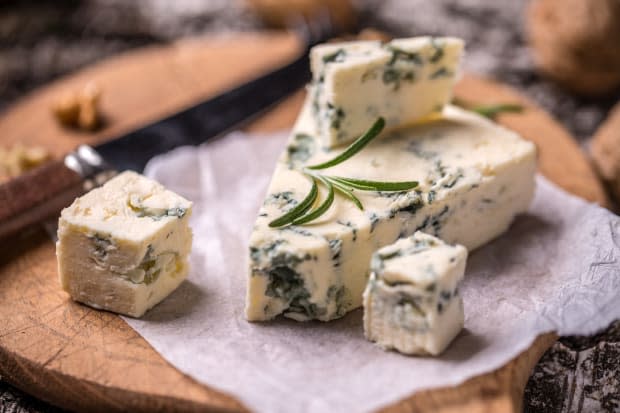
iStock
Blue cheese is a popular creamy, slightly-chunky salad dressing. But the cheese that inspired the sharp condiment can also be served on its own. The name is appropriate—Penicillium cultures, an edible mold, give the white cheese its hallmark blue spots.
Brie
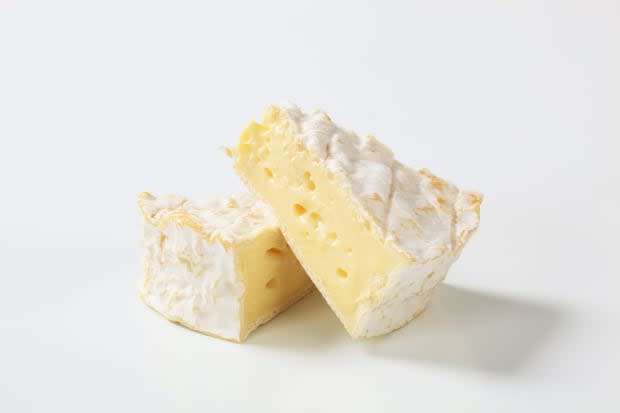
iStock
This cow's milk cheese gets its name from its place of origin—the Brie region of France. It's off-white, soft, creamy and made mostly from butter fat. Brie has a white rind that feels a bit like paper, but it's edible.
Related: 18 Easy and Oozy Baked Brie Appetizer Recipes That Are Total Fromage Goals
Burrata
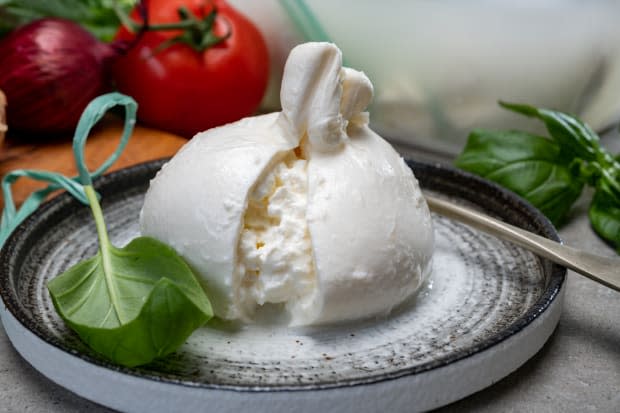
iStock
This Italian cheese is made from cow or buffalo milk. On the outside, burrata looks like mozzarella. That assumption isn't wrong. Burrata's shell is made from mozerella. But stick a fork in it—it's luxuriously creamy on the inside. The dish makes for a popular starter, usually with tomato and basil, at Italian restaurants.
Camembert
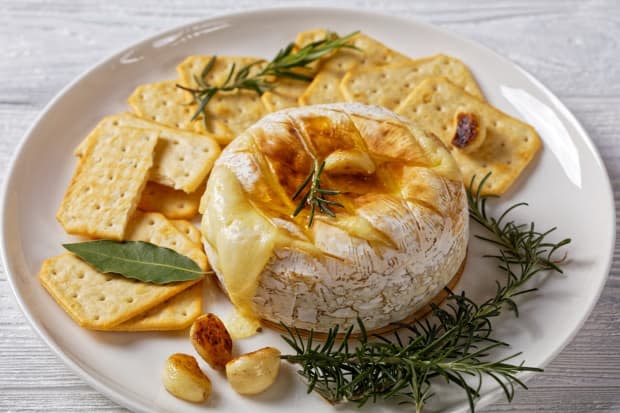
iStock
Camembert originated in Normandy in the 1800s, and we're not mad about it. The soft, surface-ripened cheese is made from cow's milk and is often mistaken for Brie. But this French cheese typically contains less butter fat.
Cheddar Cheese
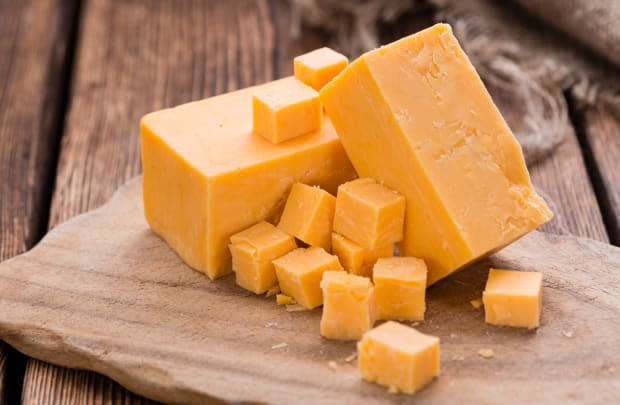
iStock
This wildly-popular cheese is accessible, approachable and versatile. It comes in yellow or off-white and can taste sharp or extra-sharp. Today, cheddar cheese is produced all over the world, but we have the Brits to thank for it. Cheddar cheese originated in Somerset, an English village.
Colby Cheese
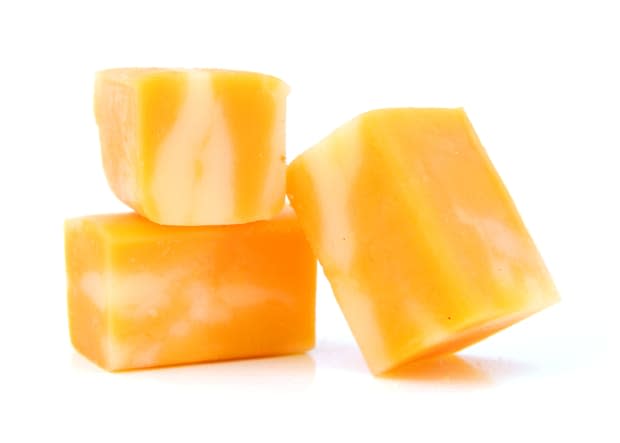
iStock
Colby cheese was first produced using cow's milk in Colby, Wisc., at the turn-of-last-century. It's semi-soft and orange. A Colby-jack variety has black and orange spots. Colby cheese is milder than cheddar. It's perfect for sandwiches, cheese plates and chiles.
Cotija Cheese
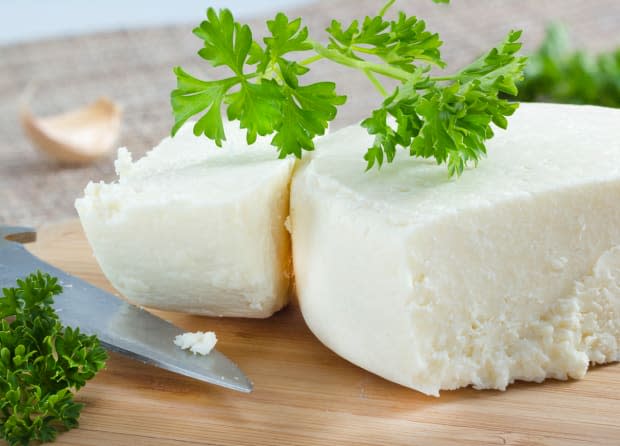
iStock
This cheese bears the name of the Mexican town of Cotija, Michoacán. It's made from cow's milk and has different textures depending on how long its been aged. Younger Cotija cheese is softer and comparable to mild feta. But aged Cotija cheese is harder and similar to Parmesan. Regardless, expect a salty flavor and easy-to-crumble cheese.
Cottage Cheese
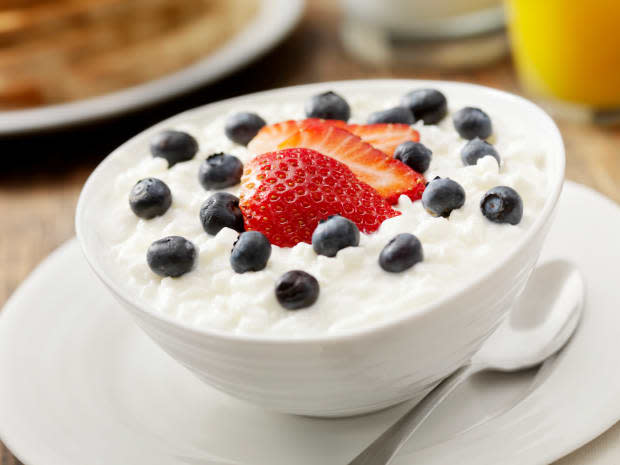
iStock
This curdled milk product is smooth, chunky, mild, creamy and delicious. Cottage cheese is packaged fresh (read: not aged), hence the mild taste. It's a good swap for yogurt when you're making a breakfast parfait.
Edam Cheese
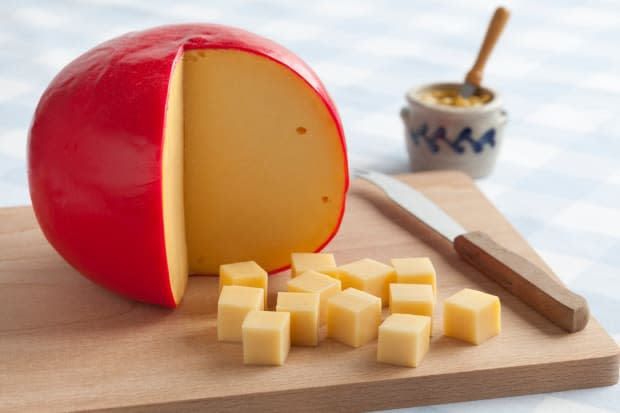
iStock
This pale-yellow cheese is named after the Northern Holland town of Edam. Its exterior is a red paraffin wax rind. Edam cheese, which has a nutty taste, can harden. But it does not go bad, making it a go-to cheese for 14th to 18th-century travelers.
Related: Are Cashews Actually Good For You? Dieticians Weigh In
Emmental Cheese
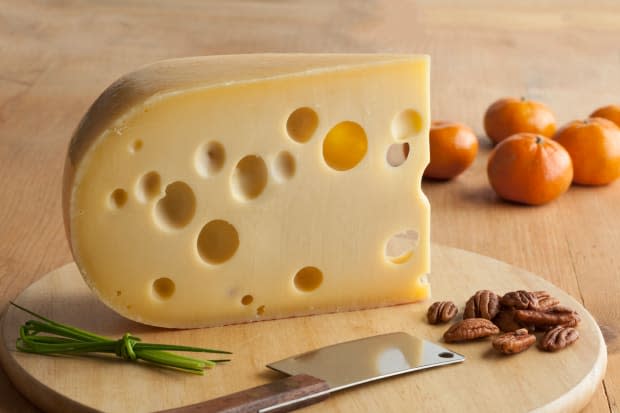
iStock
You may have had Emmental cheese without knowing it. It's the original Swiss cheese. Emmental cheese has holes and is mild compared to other cheese. It makes for a pleasant add-on to sandwiches or eggs. But you can also slice it for use on cheese boards.
Feta Cheese
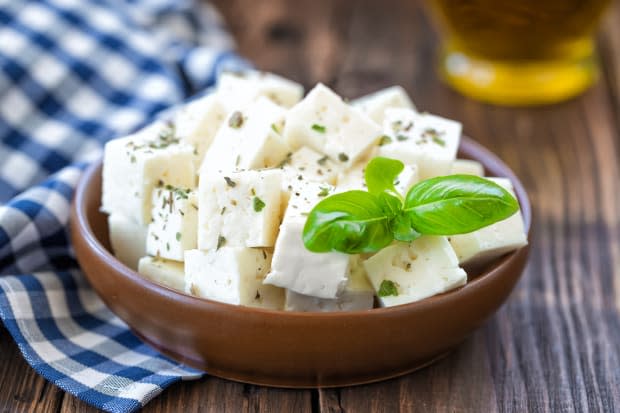
iStock
This crumbly white cheese originated in Greece and is made from sheep's milk alone or a mix of sheep's and goat's milk. It is soft and palatable, making it a popular addition to salads.
Fontina
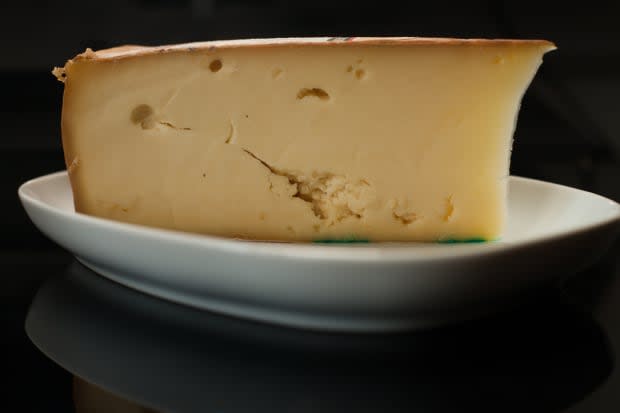
iStock
Fontina cheese came from Italy but is now produced in several countries, including the U.S. and Canada. It's semi-soft, made from cow's milk and often sold in wheels as big as 15 inches. Fontina cheese has a silky texture and buttery flavor.
Goat Cheese
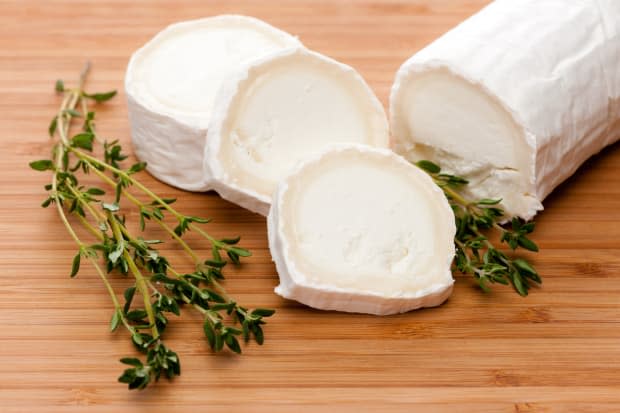
iStock
Goat cheese is actually an umbrella term for cheeses made from goat milk. Examples of goat cheese include Chevrot, Valencay, Selles sur Cher, Gouda and Brie.
Gorgonzola
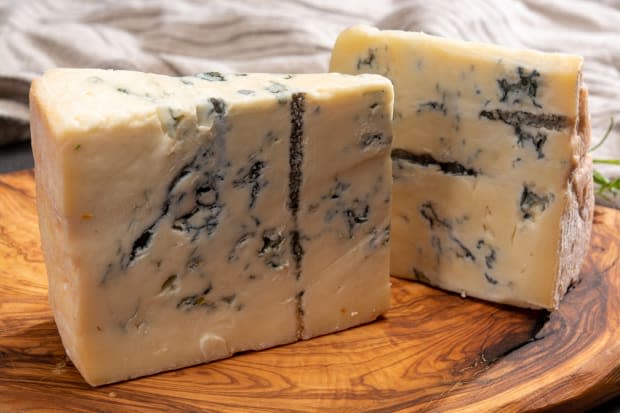
iStock
Gorgonzola is a type of blue cheese. But Gorgonzola cheese, made from 100% cow's milk, is milder than most products with a "blue cheese" label. It's mostly made in Piedmont and Lombardy, two Italian regions. Authentic Gorgonzola is only made in Italy.
Gouda
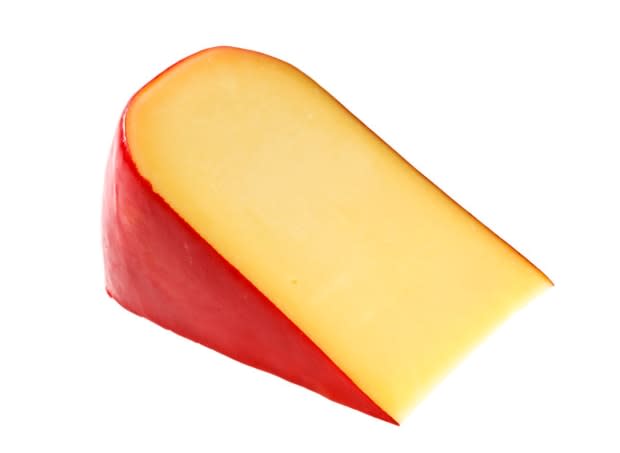
iStock
This much-loved cheese was first made in the Netherlands. It's sweet—and becomes sweeter with age—and creamy. The hard rind is edible. You can also find smoked gouda.
Grana Padano
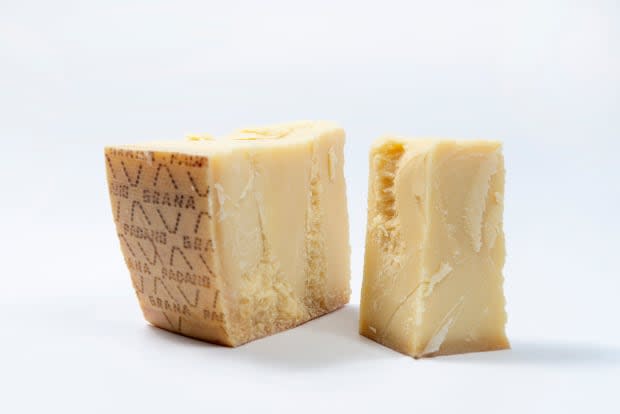
iStock
Grana means grainy in Italian, and Grana Padano fits that bill. Grana Padano is also hard and crumbly. The cheese is made with unpasteurized, semi-skimmed cow's milk and has a nutty, slightly salty taste. It's often compared to Parmigiano Reggiano.
Gruyere
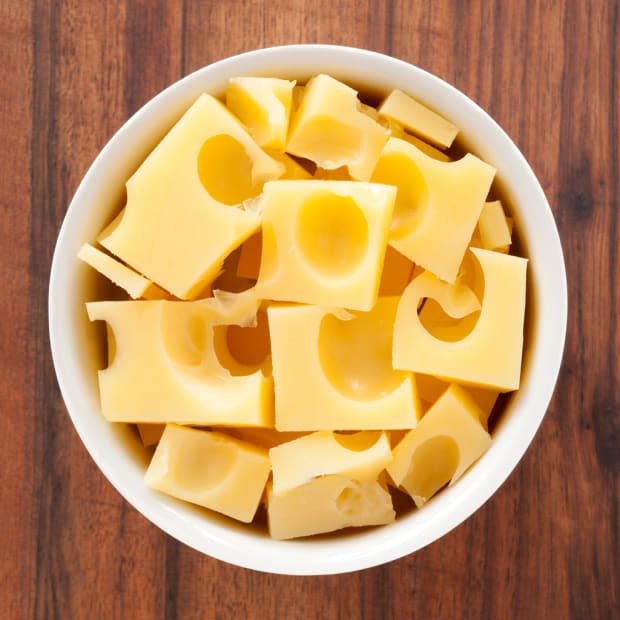
iStock
This Swiss cheese is hard, but it's also absolutely delicious melted. It's why Gruyere is the cheese of choice for French onion soups and savory fondues.
Halloumi
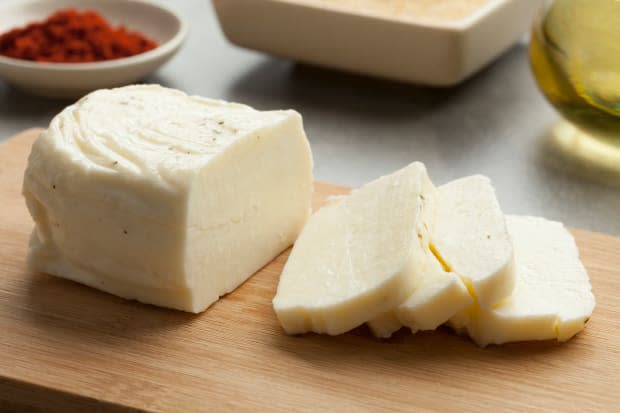
iStock
This cheese, which is native to Cyrpus, Egypt, has a "squeaky" semi-soft texture. It melts well, making it a favorite cheese for avid grillers. It's usually made from a goat-sheep milk mixture that sometimes includes cow's milk.
Havarti
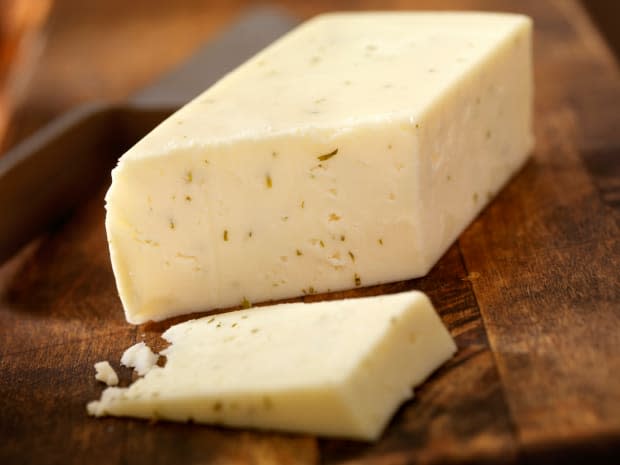
iStock
The Danish got their first taste of the mild Havarti cheese after Hanne Nielsen developed it in the 1800s. The extra-creamy version, Cream Havarti, is a delectable dessert cheese.
Jarlsberg Cheese
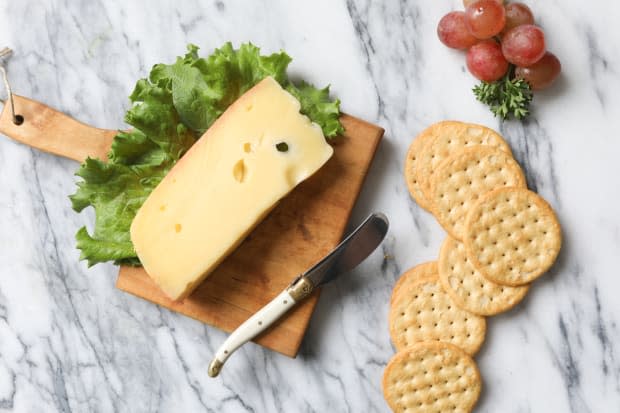
iStock
This mild cow's-milk cheese has eyes similar to Swiss cheese. But Jarlsberg cheese comes to us from Norway, making it a Swiss-type cheese. It's nutty and perfect on its own or on a sandwich.
Limburger Cheese
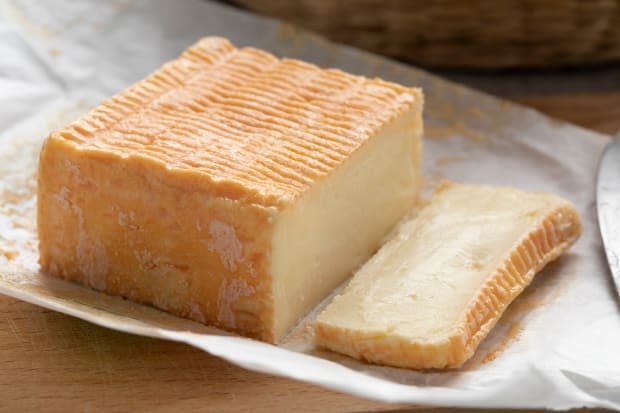
iStock
This cheese is noted more for its pungent smell than its taste. The strong scent is a result of the bacterium Brevibacterium linens, but it has continued to stand the test of time. Limburger cheese has been around since the 15th century. It's fairly mild and actually tastes sweet when young.
Manchego
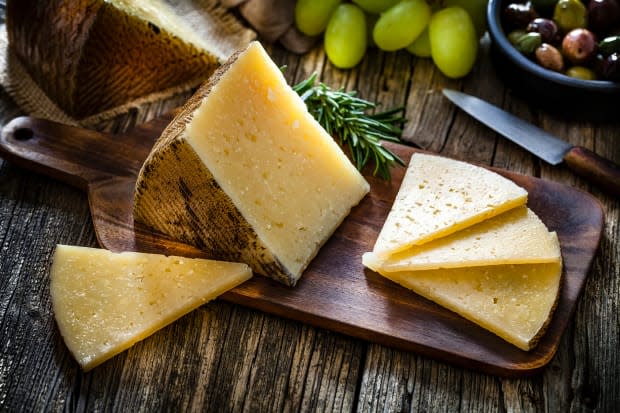
iStock
This sheep's milk cheese from the La Mancha region of Spain is firm, compact and delicious. It's aged anywhere from 60 days to two years and boasts a sharp flavor and aroma comparable to roasted lamb.
Pepper Jack Cheese
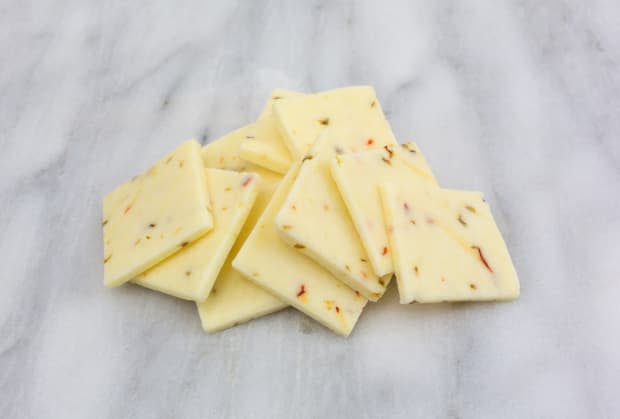
iStock
Pepper jack cheese is American cheese with a spicy kick. Inside the white cheese, you'll notice small dots that boast major flavors: sweet peppers, rosemary, habañero chilies, garlic and spicy jalapeños.
Mozzarella
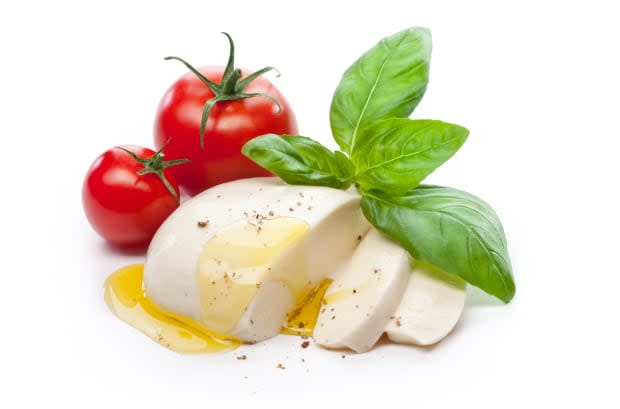
iStock
Mozzarella originated in Southern Italy. Traditional Mozzarella is made using Italian buffalo milk. It doesn't have as much fat or sodium as other cheesing, so it's often considered a "healthier" cheese choice. Mozzarella cheese is commonly used for pizza, string cheese and to make Burratta.
Muenster
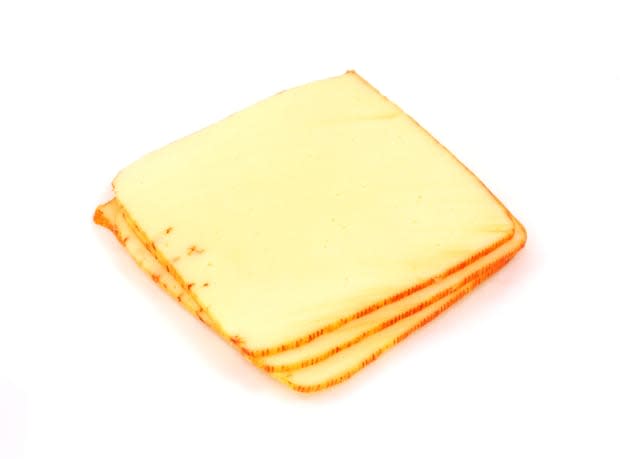
iStock
Muenster cheese is mostly white but is bordered by a light orange rind. Its tastes range from mild to sharp, and it melts well. Use this versatile cheese on sandwiches or melt it for an extra-special burger.
Paneer
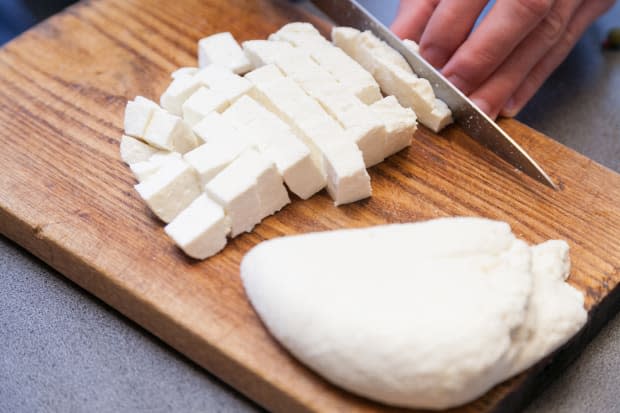
iStock
Paneer cheese is commonly used in Indian cuisine but is not considered a melting cheese. You can actually make the cheese at home. Paneer cheese is made using buffalo or cow milk that is curdled with a produce-derived acid like lemon juice. It is not aged. You may also hear it referred to as ponir.
Parmesan
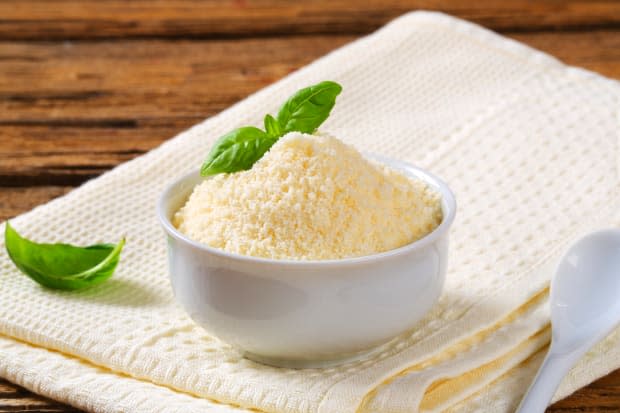
iStock
This common spaghetti topper is granular and made from cow's milk that has been aged for at least one year. It's usually served grated on dishes like soups and pasta.
Parmigiano Reggiano
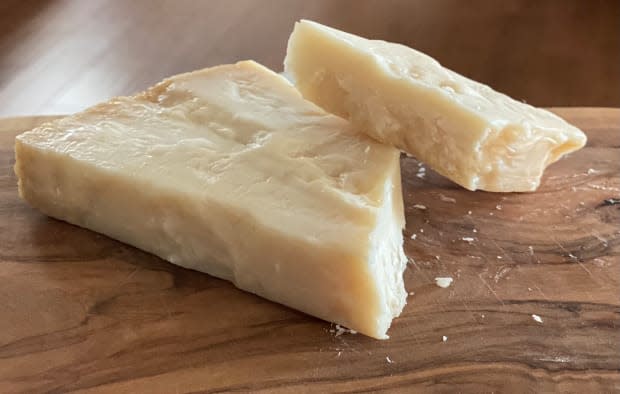
Theresa Greco
If you want to piss off an Italian, use Parmesan and Parmigiano Reggiano interchangeably. Strict laws dictate where Parmigiano Reggiano, the "King of Cheese," can be made in Italy: Parma, Modena, Reggio Emilia regions and some parts of Bologna and Mantua. Production laws are also stricter for Parmigiano Reggiano, adding more consistency to the flavor.
Related: Is Cereal a Soup? There Are A Lot of (Froot) Loop Holes In This Debate
Romano
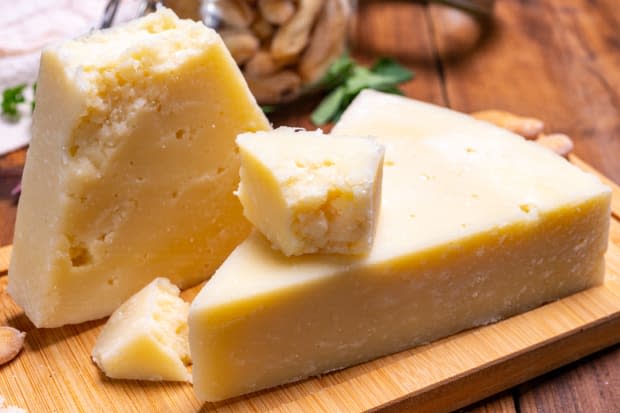
iStock
This hard Italian cheese is often served grated over soups and pasta dishes. It's made from sheep's milk and has a salty flavor.
